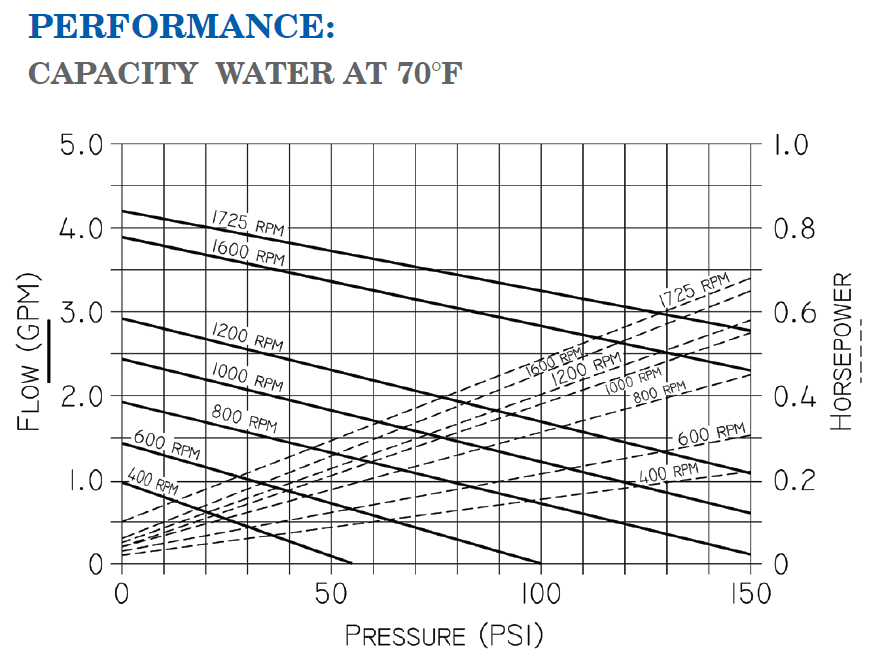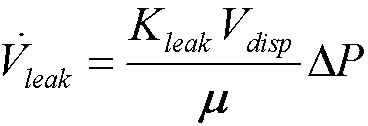
Gear Pump Model
Pump curves for gear pumps tend to be linear and power tends to depend linearly on pressure rise, as shown below for an Oberdorfer N2000 pump.

The model used in GearPump3_CL assumes that the volumetric flow rate produced by the pump is the displacement rate less a leakage flow rate.

The leakage flow rate is assumed to vary linearly with the pressure rise produced by the pump and inversely with the viscosity of the fluid. The leakage coefficient is assumed to be the product of a dimensionless leakage coefficient and the displacement.

Combining these equations leads to the pressure vs flow curve given below.

The power required by the pump is assumed to be the product of the displacement rate and the pressure rise divided by an overall pump efficiency plus a frictional component that is proportional to the displacement rate.

The model requires three parameters in addition to the displacement and speed of the pump (as well as the fluid conditions which dictates the viscosity): K_f, K_leak, and eta_o. These parameters can be either estimated using values that are typical for gear pumps. Alternatively if a specific gear pump is to be modeled then they can be calculated using two data points on performance curve using the procedure GearPump4_CL.